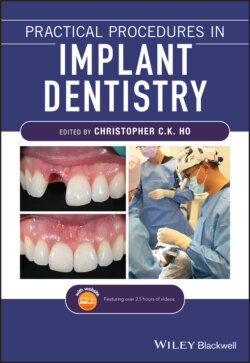Читать книгу Practical Procedures in Implant Dentistry - Группа авторов - Страница 47
5.3 Tips
ОглавлениеEvaluate the pre‐extraction hard and soft tissue contours at the site of anticipated tooth loss. Carefully consider how the mean horizontal and vertical (3.87 and 1.67 mm, respectively) reduction of the ridge might influence the planned surgical and restorative treatment.
Utilise conventional radiography and, where indicated, three‐dimensional imaging via cone beam computed tomography (CBCT) to assess the condition of the alveolar process, the buccal plate thickness, presence or absence of periapical pathology, and the proximity of important anatomical features prior to tooth extraction.
Extract the tooth in an atraumatic manner in order to preserve the bone of the residual extraction socket and avoid iatrogenic trauma to the bone or soft tissues, which may lead to increased dimensional changes of the healed ridge.
Upon removal of the tooth, thoroughly debride and explore the socket. Eliminate any soft tissue remnants and determine the relative continuity of the bony walls of the socket. Consider the benefits of no intervention versus ridge preservation versus ridge augmentation on the site of tooth loss and any future restorative treatment.
The bone biotype can be estimated by running a gloved finger across the buccal surfaces of the maxillary and mandibular arches, feeling for root prominences. A smooth ridge may indicate a favourable bony contour following extraction, whereas a ridge which has significant bony prominences may result in considerable buccal bone loss following exodontia.
